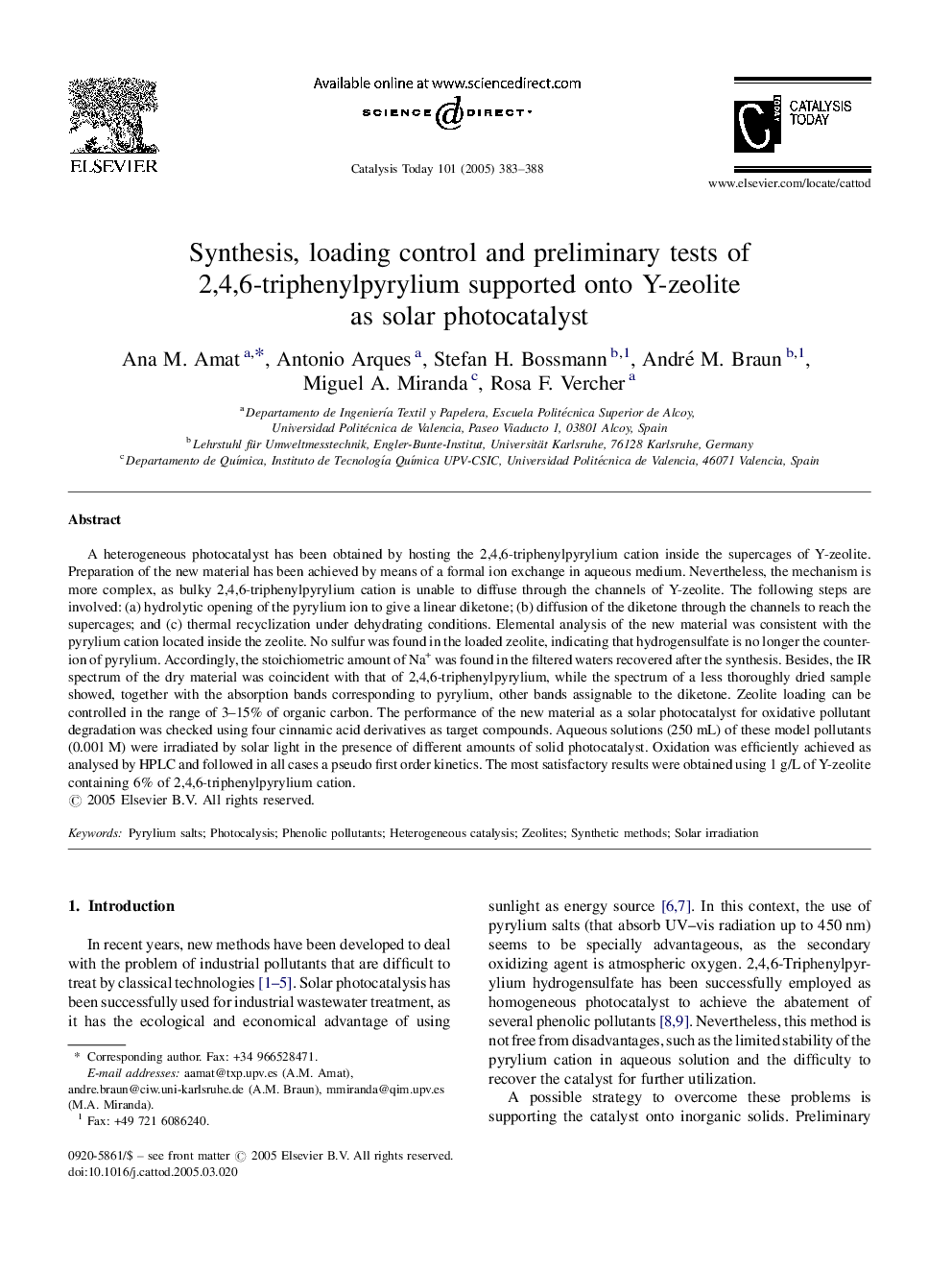| Article ID | Journal | Published Year | Pages | File Type |
|---|---|---|---|---|
| 9610483 | Catalysis Today | 2005 | 6 Pages |
Abstract
A heterogeneous photocatalyst has been obtained by hosting the 2,4,6-triphenylpyrylium cation inside the supercages of Y-zeolite. Preparation of the new material has been achieved by means of a formal ion exchange in aqueous medium. Nevertheless, the mechanism is more complex, as bulky 2,4,6-triphenylpyrylium cation is unable to diffuse through the channels of Y-zeolite. The following steps are involved: (a) hydrolytic opening of the pyrylium ion to give a linear diketone; (b) diffusion of the diketone through the channels to reach the supercages; and (c) thermal recyclization under dehydrating conditions. Elemental analysis of the new material was consistent with the pyrylium cation located inside the zeolite. No sulfur was found in the loaded zeolite, indicating that hydrogensulfate is no longer the counter-ion of pyrylium. Accordingly, the stoichiometric amount of Na+ was found in the filtered waters recovered after the synthesis. Besides, the IR spectrum of the dry material was coincident with that of 2,4,6-triphenylpyrylium, while the spectrum of a less thoroughly dried sample showed, together with the absorption bands corresponding to pyrylium, other bands assignable to the diketone. Zeolite loading can be controlled in the range of 3-15% of organic carbon. The performance of the new material as a solar photocatalyst for oxidative pollutant degradation was checked using four cinnamic acid derivatives as target compounds. Aqueous solutions (250Â mL) of these model pollutants (0.001Â M) were irradiated by solar light in the presence of different amounts of solid photocatalyst. Oxidation was efficiently achieved as analysed by HPLC and followed in all cases a pseudo first order kinetics. The most satisfactory results were obtained using 1Â g/L of Y-zeolite containing 6% of 2,4,6-triphenylpyrylium cation.
Keywords
Related Topics
Physical Sciences and Engineering
Chemical Engineering
Catalysis
Authors
Ana M. Amat, Antonio Arques, Stefan H. Bossmann, André M. Braun, Miguel A. Miranda, Rosa F. Vercher,
